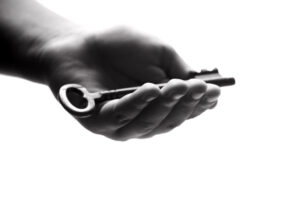Challenges Faced by Teenagers
 Challenges Faced by Teenagers
Challenges Faced by Teenagers
Mindfulness and Meditation
The teenage years are a pivotal period of growth and development, characterized by numerous changes and challenges. This phase, bridging childhood and adulthood, presents unique difficulties that can significantly impact a teenager’s mental, emotional, and physical well-being. Understanding these challenges faced by teenagers is crucial for parents, educators, and society to provide the necessary support and guidance.
1. Academic Pressure
Intense Expectations
Teenagers often face immense academic pressure from schools, parents, and themselves. The expectation to excel in exams, complete assignments, and participate in extracurricular activities can be overwhelming. The competition for college admissions and scholarships adds to this stress, leading to anxiety and burnout.
Balancing Responsibilities
Balancing academic commitments with other responsibilities is one of the challenges faced by teenagers, such as part-time jobs or family duties. Time management becomes a critical yet difficult skill to master.
2. Mental Health issues and challenges Faced by teenagers
Anxiety and Depression
The prevalence of anxiety and depression among teenagers is rising. Academic stress, social pressures, and personal issues can contribute to these mental health conditions. Many teens struggle to cope with these feelings, leading to severe consequences if left unaddressed.
Identity and Self-Esteem
Teenagers are in the process of forming their identities and often struggle with self-esteem issues. Comparing themselves to peers, dealing with body image concerns, and navigating the complexities of self-worth can lead to mental health challenges.
3. Social Challenges
Peer Pressure
Peer pressure is a significant challenges faced by teenagers during adolescence. The desire to fit in and be accepted can lead teens to engage in risky behaviors, such as experimenting with drugs, alcohol, or unsafe activities.
Bullying and Cyberbullying
Bullying, both in person and online, can have devastating effects on a teenager’s mental and emotional health. Cyberbullying, in particular, can be pervasive and hard to escape, leading to feelings of isolation and despair.
4. Technological Distractions
Screen Time and Social Media
Excessive screen time and social media use can distract teens from their studies and negatively impact their sleep and physical health. The pressure to maintain a certain online persona can also contribute to anxiety and low self-esteem.
Digital Addiction
The addictive nature of technology can lead to problems such as reduced attention span, lack of face-to-face interactions, and difficulty in managing time effectively.
5. Family Dynamics
Parental Expectations and Conflicts
Conflicts with parents or guardians can be a significant source of stress. Teens may feel misunderstood or pressured to meet parental expectations, leading to strained relationships and emotional turmoil, thereby making it one of the challenges faced by teenagers.
Divorce and Family Issues
Another crucial challenge faced by teenagers is family instability, such as divorce or financial problems, which can have a profound impact on a teenager’s sense of security and well-being. These issues can lead to increased stress and distraction from their studies and social lives.
6. Physical Changes
Puberty
The physical changes associated with puberty can be confusing and stressful. Dealing with changes in their bodies, new feelings, and the onset of sexual development can be overwhelming for many teens.
Health and Nutrition
7. Future Uncertainty
Career Choices
Another challenge faced by teenagers today is that deciding on a career path can be daunting. The pressure to choose the right college, major, or job can create anxiety about the future. Many teens feel uncertain about their interests and abilities, making this decision-making process even more difficult.
Economic Concerns
Economic instability and concerns about financial independence can add to the stress. Teenagers may worry about their ability to support themselves and achieve their goals in an uncertain job market.
8. Substance Abuse
Experimentation and Addiction
The teenage years are a time of experimentation, and many teens are exposed to drugs and alcohol. Peer pressure and the desire to fit in can lead to substance abuse, which poses serious health risks and can derail their future plans.
9. Cultural and social Pressures
Societal Expectations
Society often imposes unrealistic standards on teenagers regarding beauty, success, and behavior. These expectations can be overwhelming and contribute to stress, anxiety, and self-esteem issues.
Cultural Identity
Teens from diverse backgrounds may struggle with their cultural identity, especially if they feel caught between different cultural expectations. This can lead to confusion and conflict as they try to find their place in the world. The challenges faced by teenagers are multifaceted and complex, influenced by academic, social, technological, familial, and personal factors.
The Importance of Improved Concentration
Academic Success
Enhanced Learning and Retention
Improved concentration enables students to absorb and retain information more effectively. When students can focus on their studies without frequent distractions, they can process and understand complex concepts better, leading to improved academic performance.
Efficient Study Habits
Concentration allows students to study more efficiently, reducing the time needed to complete assignments and prepare for exams. This efficiency not only boosts grades but also reduces the stress associated with academic pressure.
Higher Cognitive Skills
Sustained concentration helps develop higher-order cognitive skills such as critical thinking, problem-solving, and creativity. These skills are essential for academic success and are highly valued in both educational and professional settings.
Professional Productivity
Increased Work Efficiency
In the professional world, improved concentration translates to higher productivity. Employees who can focus on their tasks are able to complete their work more quickly and accurately, leading to better performance and job satisfaction.
Enhanced Quality of Work
Concentration allows professionals to pay attention to detail, reducing errors and enhancing the overall quality of their work. This is particularly important in fields that require precision, such as medicine, engineering, and finance.
Better Time Management
Focused individuals can manage their time more effectively, prioritizing tasks and avoiding procrastination. This leads to a more balanced workload and the ability to meet deadlines consistently. it serves as solution to the challenges faced by teenagers nowadays
Personal Growth
Improved Mental Health
Improved concentration is linked to better mental health. The ability to focus reduces anxiety and stress, as individuals feel more in control of their tasks and less overwhelmed by distractions. Mindfulness and concentration practices, such as meditation, have been shown to improve overall well-being.
Enhanced Relationships
Concentration is crucial for effective communication and relationship-building. When individuals can focus on conversations and activities with others, they are more present and engaged, leading to stronger, more meaningful connections.
Personal Development
Concentration aids in personal development by allowing individuals to set and achieve goals. Whether learning a new skill, pursuing a hobby, or engaging in self-improvement activities, the ability to focus is essential for making consistent progress.
Practical Applications
Sports and Physical Activities
Athletes benefit greatly from improved concentration. The ability to focus on training, strategies, and in-the-moment decisions can enhance performance in sports and physical activities. Concentration helps athletes maintain their mental edge, which is often crucial for success in competitive environments.
Creative Pursuits
Artists, writers, musicians, and other creatives rely on concentration to bring their visions to life. Deep focus allows for a flow state, where creativity can flourish, leading to higher quality and more original work.
Daily Tasks and Responsibilities
Improved concentration makes everyday tasks, such as managing finances, household chores, and personal responsibilities, more manageable. Being able to focus on these tasks reduces mistakes and increases efficiency, making daily life smoother and less stressful.
Strategies for Improving Concentration
Mindfulness and Meditation
Practicing mindfulness and meditation can enhance concentration by training the brain to focus on the present moment. These practices also reduce stress and improve overall mental health, creating a conducive environment for better concentration.
Healthy Lifestyle Choices
Maintaining a healthy lifestyle through proper nutrition, regular exercise, and adequate sleep supports brain function and concentration. Avoiding excessive caffeine and managing stress levels are also crucial for maintaining focus.
Structured Routines and Breaks
Establishing structured routines and incorporating regular breaks can help maintain concentration over longer periods. Techniques such as the Pomodoro Technique, which involves focused work intervals followed by short breaks, can be particularly effective.
Limiting Distractions
Creating a distraction-free environment is essential for improving concentration. This may involve setting boundaries with technology, organizing your workspace, and communicating your need for focused time to others.
Setting Clear Goals
Setting clear, achievable goals provides direction and purpose, making it easier to concentrate on specific tasks. Breaking larger tasks into smaller, manageable steps can also prevent feeling overwhelmed and enhance focus.
Improved concentration is a vital skill that impacts various aspects of life, from academic and professional success to personal growth and mental well-being. By implementing strategies to enhance focus, individuals can unlock their full potential and lead more productive, fulfilling lives.
Improving concentration is a key skill that can significantly enhance productivity and the quality of work in both academic and professional settings. Here are several effective techniques for improving concentration:
1. The Pomodoro Technique
How It Works:
The Pomodoro Technique involves breaking your work into 25-minute intervals, called “Pomodoros,” followed by a 5-minute break. After completing four Pomodoros, take a longer break of 15–30 minutes.
Benefits:
- Prevents Burnout: Regular breaks help prevent mental fatigue.
- Increases Focus: Knowing you have limited time to work encourages you to concentrate.
- Improves Time Management: Helps you allocate specific time slots for tasks, making it easier to manage your workload.
Steps:
- Choose a task.
- Set a timer for 25 minutes.
- Work on the task until the timer rings.
- Take a 5-minute break.
- Repeat, and after four Pomodoros, take a longer break.
2. Mindfulness Meditation
How It Works:
Mindfulness meditation involves focusing your mind on the present moment, often through controlled breathing exercises.
Benefits:
- Reduces stress: helps manage anxiety, which can distract you from tasks.
- Improves Attention Span: Regular practice enhances your ability to maintain focus over longer periods of time.
- Enhances Emotional Regulation: Helps manage emotional responses that can disrupt concentration.
Steps:
- Find a quiet place and sit comfortably.
- Close your eyes and focus on your breathing.
- Notice the sensation of your breath entering and leaving your body.
- When your mind wanders, gently bring it back to your breath.
3. Task Prioritization
How It Works:
Organizing tasks by priority helps ensure that the most important tasks get done first, enhancing focus and productivity.
Benefits:
- Reduces Overwhelm: Breaking down tasks into smaller steps makes them more manageable.
- Increases Efficiency: Ensures that your energy is spent on high-priority tasks.
- Provides Clarity: Knowing what needs to be done first helps maintain focus.
Steps:
- List all the tasks you need to complete.
- Rank them by importance and urgency.
- Focus on completing the highest-priority tasks first.
- Reevaluate and adjust your priorities as needed.
4. Creating a Conducive Environment is one of the solutions to the challenges faced by teenagers
How It Works:
Your study or work environment significantly impacts your ability to concentrate. Creating a space free from distractions can help you maintain focus.
Benefits:
- Minimizes Interruptions: Reduces external factors that can break your concentration.
- Enhances Comfort: A comfortable, organized space can improve your ability to focus.
- Boosts Productivity: A dedicated workspace signals to your brain that it’s time to work.
Steps:
- Find a quiet place where you won’t be disturbed.
- Ensure good lighting and comfortable seating.
- Keep your workspace organized and free of clutter.
- Use tools like noise-canceling headphones or white noise machines if necessary.
5. Healthy Lifestyle Choices
How It Works:
Maintaining a healthy lifestyle through proper nutrition, regular exercise, and adequate sleep supports overall brain function and concentration.
Benefits:
- Improves Brain Health: Proper nutrition and hydration enhance cognitive function.
- Boosts Energy Levels: Regular physical activity increases energy and reduces fatigue.
- Enhances Mood: Sufficient sleep and exercise help regulate mood and reduce stress.
Steps:
- Eat a balanced diet rich in fruits, vegetables, whole grains, and lean proteins.
- Exercise regularly, aiming for at least 30 minutes of physical activity most days.
- Get 7-9 hours of sleep each night.
- Stay hydrated throughout the day.
6. Limiting Technology Distractions as part of the solutions towards the challenges faced by teenagers
How It Works:
Reducing exposure to technological distractions, such as social media and unnecessary notifications, can help improve focus.
Benefits:
- Reduces Interruptions: Fewer distractions from notifications and social media.
- Enhances Focus: It helps you stay on task without the temptation of digital interruptions.
- Improves Time Management: More time is spent on productive activities rather than on distracting apps or websites.
Steps:
- Turn off non-essential notifications on your devices.
- Use apps like Freedom or StayFocusd to block distracting websites.
- Set specific times to check emails and social media.
- Keep your phone out of reach or in another room while working.
7. Regular Breaks and Physical Movement
How It Works:
Incorporating regular breaks and physical movement into your routine helps maintain mental sharpness and prevent fatigue.
Benefits:
- Prevents Burnout: Regular breaks help you recharge.
- Boosts Creativity: Movement can stimulate creative thinking.
- Enhances Physical Health: Reduces the negative effects of prolonged sitting.
Steps:
- Take a short break every 60–90 minutes.
- Use breaks to stand up, stretch, or take a brief walk.
- Incorporate physical activity into your daily routine, such as stretching or light exercise.
Improving concentration requires a combination of strategies tailored to your personal preferences and lifestyle. Techniques such as the Pomodoro Technique, mindfulness meditation, task prioritization, creating a conducive environment, maintaining a healthy lifestyle, limiting technology distractions, and taking regular breaks can significantly enhance your ability to focus. By implementing these techniques, you can improve your productivity, achieve your goals more efficiently, and maintain a better balance in your daily life.
Mindfulness and Meditation: Enhancing Concentration and Well-Being
Mindfulness and meditation are powerful practices that can significantly improve concentration, reduce stress, and enhance overall well-being. These techniques, rooted in ancient traditions, have gained widespread popularity in modern times due to their proven benefits for mental health and cognitive function.
Understanding Mindfulness
Mindfulness is the practice of being fully present and engaged in the current moment, aware of your thoughts, feelings, and sensations without judgment. It involves paying attention to your experiences in a purposeful and non-reactive manner.
Key Principles of Mindfulness:
- Present-moment awareness: Focusing on the here and now, rather than dwelling on the past or worrying about the future.
- Non-Judgment: Observing your thoughts and feelings without labeling them as good or bad.
- Acceptance: Embracing your experiences as they are, without trying to change them.
Understanding Meditation
Meditation is a broader practice that often incorporates mindfulness but can also include other techniques aimed at achieving a state of relaxation, focus, and heightened awareness. There are various types of meditation, each with its own unique approach and benefits.
Common Types of Meditation:
- Mindfulness Meditation: Focuses on breathing and the present moment.
- Transcendental Meditation: Involves the repetition of a mantra or sound.
- Loving-Kindness Meditation: Cultivates feelings of compassion and kindness towards oneself and others.
- Body Scan Meditation: This involves focusing on different parts of the body to promote relaxation and awareness.
Benefits of Mindfulness and Meditation
Improved Concentration
- Enhanced Attention: Regular practice of mindfulness and meditation trains the brain to focus more effectively, increasing attention span and reducing distractions.
- Better Task Performance: Improved concentration leads to more efficient and effective performance in academic, professional, and personal tasks.
Reduced Stress and Anxiety
- Stress Reduction: Mindfulness and meditation activate the relaxation response, reducing the production of stress hormones like cortisol.
- Anxiety Management: These practices help manage anxiety by encouraging a non-judgmental awareness of anxious thoughts and feelings.
Improved Emotional Regulation
- Better Mood: Regular meditation can lead to increased feelings of happiness and emotional stability.
- Emotional Resilience: Mindfulness helps individuals respond to emotional challenges with greater calmness and clarity.
Enhanced Well-Being
- Mental Clarity: Meditation can clear the mind of clutter, leading to better decision-making and problem-solving abilities.
- Physical Health: The relaxation induced by meditation can lower blood pressure, improve sleep, and boost the immune system.
Techniques for Practicing Mindfulness and Meditation
Mindfulness Meditation
- Find a Quiet Space: Choose a quiet, comfortable place where you won’t be disturbed.
- Sit Comfortably: Sit in a comfortable position with your back straight and hands resting on your lap.
- Focus on Your Breath: Close your eyes and bring your attention to your breath. Notice the sensation of the breath entering and leaving your body.
- Observe Thoughts and Feelings: As thoughts and feelings arise, observe them without judgment and gently bring your focus back to your breath.
- Practice Regularly: Start with short sessions (5–10 minutes) and gradually increase the duration as you become more comfortable.
Body Scan Meditation
- Lie Down Comfortably: Lie on your back with your arms at your sides and legs slightly apart.
- Focus on Your Breath: Take a few deep breaths to relax.
- Scan Your Body: Starting from your toes, slowly bring your attention to each part of your body, noticing any sensations, tension, or discomfort.
- Release Tension: As you focus on each part of your body, consciously release any tension you may feel.
- Continue Upward: Move your attention slowly upward through your legs, torso, arms, and head, until you have scanned your entire body.
Loving-Kindness Meditation
- Sit Comfortably: Sit in a comfortable position and close your eyes.
- Focus on Your Breath: Take a few deep breaths to relax.
- Cultivate Feelings of Kindness: Begin by generating feelings of love and kindness towards yourself. Repeat phrases like, “May I be happy, may I be healthy, may I be safe.”
- Extend to Others: Gradually extend these feelings to others, starting with loved ones and eventually encompassing all beings.
- End with Reflection: Take a moment to reflect on the feelings of warmth and compassion before concluding the session.
Guided Meditation
- Choose a Guide: Use a guided meditation app or video to lead you through the process.
- Follow Instructions: Listen to the guide’s instructions and follow along, focusing on their words and the imagery they evoke.
- Relax and Let Go: Allow yourself to fully immerse in the guided experience, letting go of any outside thoughts or distractions.
Tips for Successful Practice
- Consistency: Practice regularly, ideally daily, to build and maintain your mindfulness and meditation skills.
- Patience: Be patient with yourself, especially if you find it challenging to focus initially. Improvement comes with time and practice.
- Non-Attachment: Avoid striving for specific outcomes or judging your meditation sessions. Simply observe and accept whatever arises during your practice.
Establishing a Distraction-Free Environment for Improved Concentration
Creating a distraction-free environment is crucial for enhancing concentration and productivity. By minimizing interruptions and creating a space conducive to focus, you can significantly improve your ability to complete tasks efficiently and effectively. Here are some strategies to help you establish a distraction-free environment.
1. Choose the Right Location
Dedicated Workspace
- Home Office or Study Area: Designate a specific area in your home solely for work or study. Avoid using this space for leisure activities to create a clear mental association between the location and productive work.
- Library or Co-working Space: If home environments are too distracting, consider using a library or co-working space where the atmosphere is more conducive to concentration.
Quiet and Comfortable Environment
- Minimize Noise: Choose a location away from high-traffic areas and loud noises. Use noise-canceling headphones or a white noise machine to block out background noise.
- Comfortable Seating: Ensure your chair and desk are ergonomically designed to promote good posture and reduce physical discomfort.
2. Organize Your Workspace
Declutter
- Clean Desk Policy: Keep your desk free of unnecessary items. A clutter-free workspace reduces visual distractions and helps you focus on the task at hand.
- Organize Supplies: Keep essential supplies within reach and store non-essential items away. Use organizers and storage solutions to maintain order.
Digital Organization
- Desktop Management: Organize your computer desktop by keeping only necessary files and folders visible. Use digital tools and software to keep your work organized.
- Browser Tabs: Limit the number of open browser tabs. Use tools like browser extensions to manage tabs and bookmarks efficiently.
3. Control Technological Distractions
Notification Management
- Turn Off Notifications: Disable non-essential notifications on your computer and mobile devices. This includes social media, email, and app notifications.
- Focus Modes: Use “Do Not Disturb” or “Focus Mode” settings on your devices to prevent interruptions during work periods.
App and Website Blocking
- Blocking Tools: Use apps like Freedom, Stay Focused, or Cold Turkey to block distracting websites and apps during designated work times.
- Scheduled Usage: Set specific times to check emails and social media, rather than allowing constant access throughout the day.
4. Establish a Routine
Work Schedule
- Set Specific Work Hours: Establish regular work or study hours to create a consistent routine. This helps train your mind to be ready for focus during these times.
- Breaks and Rest: Incorporate regular breaks into your schedule to prevent burnout and maintain high levels of concentration.
Task Prioritization
- To-Do Lists: Create daily or weekly to-do lists to prioritize tasks. Break down larger projects into smaller, manageable steps.
- Time Blocking: Allocate specific time blocks for different tasks and stick to them. This technique helps manage your time effectively and reduces procrastination.
5. Minimize External Interruptions
Communication Management
- Set Boundaries: Inform family members, roommates, or colleagues of your work hours and request that they avoid interrupting you during these times.
- Signal Availability: Use visual cues, such as a closed door or a “Do Not Disturb” sign, to indicate when you are focused on work and should not be disturbed.
Phone Usage
- Silent Mode: Keep your phone on silent or airplane mode to avoid disruptions from calls and messages.
- Designated Phone Time: Check your phone during scheduled breaks rather than throughout your work periods.
6. Enhance Your Environment
Lighting
- Natural Light: Work near a window to take advantage of natural light, which can improve mood and focus.
- Proper Lighting: Use adequate lighting to reduce eye strain and maintain alertness. Adjustable desk lamps can help focus light on your workspace.
Temperature and Air Quality
- Comfortable Temperature: Ensure your workspace is at a comfortable temperature. If it’s too hot or cold, it can be distracting.
- Ventilation: Good air quality is essential. Use air purifiers or open windows to ensure a supply of fresh air.
Personal Comfort
- Ergonomics: Ensure your chair and desk are ergonomically suited to prevent physical discomfort.
- Personal Touches: Add personal touches like plants or artwork that make the space pleasant without being distracting.
Establishing a distraction-free environment is vital for enhancing concentration and productivity. By choosing the right location, organizing your workspace, controlling technological distractions, establishing a routine, minimizing external interruptions, and enhancing your environment, you can create a space that supports focus and efficiency.






















1 comment